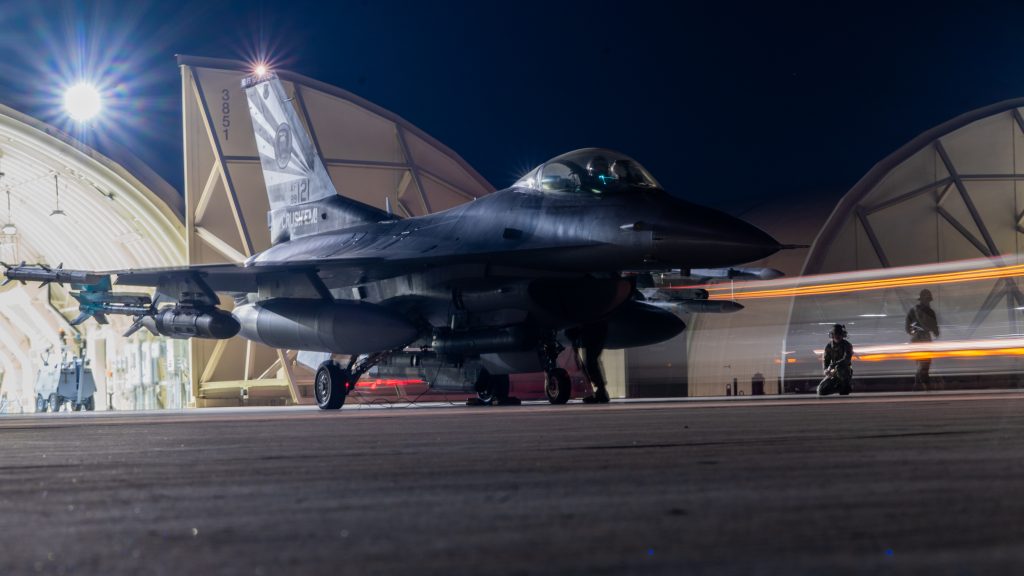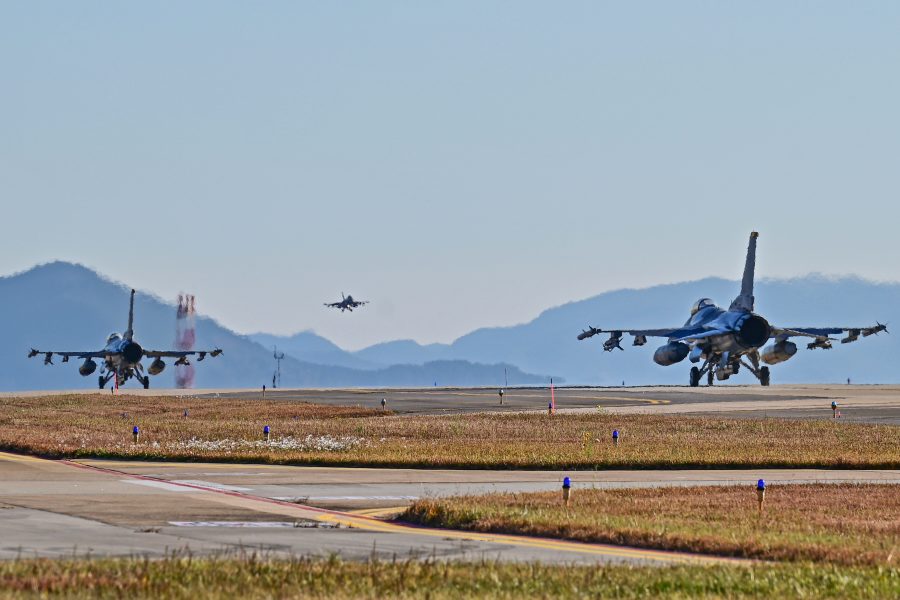More than 130 aircraft from the U.S., South Korea, and Australia are participating in a joint exercise dubbed “Vigilant Defense 24” that kicked off Oct. 30.
Hosted by the Seventh Air Force at Osan Air Base, South Korea, the exercise will last through Nov. 3, focusing on interoperability between the allies and a broad range of mission sets.
More than 25 types of aircraft are participating, including fighter, cargo, tanker, and reconnaissance planes, according to a release from the Republic of Korea Ministry of National Defense.
The U.S. Air Force will contribute F-35, F-16, and A-10 fighter/attack aircraft, as well KC-135 aerial refuelers. The Republic of Korea Air Force will fly its own F-35s, as well as its E-7 for airborne early warning and control and KC-330. The Royal Australian Air Force will contribute the KC-30A multirole tanker transport.

Col. Michael G. McCarthy, 8th Operations Group commander, said in a statement that opportunities like these are “truly invaluable to refining the necessary tactics, techniques and procedures that ensure the combined force can operate as one cohesive unit, should we ever be called upon.”
The release from the 8th Fighter Wing highlighted that the training exercise is routine, “entirely defensive in nature,” and not in response to current real-world threats or situations.
During the five-day event, the U.S. and South Korea will practice integrating different kinds of aircraft and different kinds of operations including air defense, close air support, and emergency air interdiction, according to ROK’s Ministry of National Defense.
Another goal will be improving interoperability and coordination between the fourth- and fifth-generation fighters. South Korea has already ordered and started taking delivery of 40 fifth-gen F-35s, and is looking to buy 25 more in a deal valued at $5.06 billion, which was approved by the U.S. State Department in September.
The joint training between the three allies does carry the possibility of provoking a response from North Korea.Last year’s exercise, named ‘Vigilant Storm,’ featured around 240 aircraft from the U.S. Air Force, Marine Corps, Navy, and, Army, along with South Korea and Australia.
North Korea objected to the exercise through its state media. During and after the extended exercise last year, Pyongyang test-fired multiple short-range ballistic missiles and attempted an intercontinental ballistic missile launch, which ended in a failure.
Leaders from the U.S. and South Korea have pledged to conduct more regular, large-scale exercises together to bolster the alliance and deter North Korea.
North Korea, however, continues to test new missiles. Most recently, it fired off two short-range ballistic missiles ahead of a bilateral summit between leader Kim Jong Un and Russian president Vladimir Putin on Sept. 13.
After that summit, the U.S., ROK, and Japan criticized North Korea for providing military equipment to Russia against Ukraine, warning that such actions violate U.N. Security Council resolutions and could “significantly increase the human toll of Russia’s war of aggression.”
The joint statement released on Oct. 25 by U.S. Secretary of State Anthon Blinken and South Korea and Japan’s Foreign Ministers claimed Pyongyang is seeking military assistance from Moscow to advance its own capabilities. It also raised concerns regarding potential exchanges of nuclear or ballistic missile technology between them.
Russia and North Korea have denied such exchanges, but satellite images and assessments from think tanks indicate increased rail traffic and suspected munition shipments from Pyongyang to Moscow.
